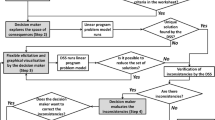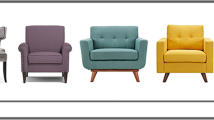Abstract
In order to obtain user’s preferred image more accurately in the process of innovative design of perceptual products, eye movement combined with EEG measurement technology is used to measure the user’s preferred image of products. Eight earpieces that met the user’s preference were used as the starting stimulus and five pairs of mutually sensitive sentimental image adjective pairs as the detecting stimulus. Based on the eye movement behavior data and EEG signals of the subjects, the participants’ preferred image orientation of earpieces was analyzed. The results show that the image words of “Complex-Concise,” “Retro-Modern,” “Smart-Heavy,” and “Lively-Serious” made the subject’s average fixation duration shorter than other words. In addition, the power of α waves captured by the left frontal channel (F3) was significantly lower than the average power of the α waves captured by the right frontal channel (F4) when the subject viewed the image words of “Concise,” “Gorgeous,” “Modern,” “Smart,” and “Lively.” It shows that user’s preferred image of perceptual products can be acquired more scientifically and effectively by using the combined physiological measurement technology of eye tracking and EEG, and reference can be provided for design applications based on user’s preferred image in the jewelry.
Access this chapter
Tax calculation will be finalised at checkout
Purchases are for personal use only
Similar content being viewed by others
References
Khushaba, R.N., Wise, C., Kodagoda, S.: Consumer neuroscience: assessing the brain response to marketing stimuli using electroencephalogram (EEG) and eye tracking. Expert Syst. Appl. 40(9), 3803–3812 (2013)
Kenning, P.H., Plassmann, H.: How neuroscience can inform consumer research? IEEE Trans. Neural Syst. Rehabil. Eng. 16(6), 532–538 (2008)
Yang, M.Q., Lin, L., Milekic, S.: Affective image classification based on user eye movement and EEG experience information. Interact. Comput. 30(5), 417–432 (2018)
Moshagen, M., Thielsch, M.: Facets of visual aesthetics. Int. J. Hum Comput Stud. 68(10), 689–709 (2010)
Kostyra, E., Wasiak-Zys, G., Rambuszek, M.: Determining the sensory characteristics, associated emotions and degree of liking of the visual attributes of smoked ham. A multifaceted study. LWT-Food Sci. Technol. 65, 246–253 (2016)
Colombo, B., Laddaga, S., Antonietti, A.: Psychology and design. The influence of the environment’s representation over emotion and cognition. An ET study on Ikea design. Procedia Manuf. 3(6), 2259–2266 (2015)
Lee, Y.Y., Hsieh, S.: Classifying different emotional states by means of EEG-based functional connectivity patterns. Plos One 9(4), e95415 (2014)
Bos, D.O.: EEG-based emotion recognition. The influence of visual and auditory stimuli. Emotion 1359, 667–670 (2012)
Guo, F., Ding, Y., Wang, T.: Applying event related potentials to evaluate user preferences toward smartphone form design. Int. J. Ind. Ergon. 54, 57–64 (2016)
Khushaba, R.N., Greenacre, L., Kodagoda, S.: Choice modeling and the brain: a study on the Electroencephalogram (EEG) of preference. Expert Syst. Appl. 39(16), 12378–12388 (2012)
Briesemeister, B.B., Tamm, S., Heine, A.: Approach the good, withdraw from the bad—a review on frontal alpha asymmetry measures in applied psychological research. Psychology 4(3), 261–267 (2013)
Gao, X.Q., Wang, Y.Y., Ge, L.Z.: The combination of eye movement technique and EEG technique—a new approach to cognitive research. Ergonomics 11(1), 36–38 (2005)
Li, S., Zhuang, X.X., Liu, W.L.: Study on emotion measurement method of EEG and eye movement technology fusion. IE&M 12(19), 144–148 (2014)
Tang, B.B., Guo, G., Wang, K.: Combined with eye movement and EEG, the auto industry design user experience selection. Comput. Integr. Manuf. Syst. 6(21), 1449–1459 (2015)
Jantathai, S., Danner, L., Joech, M.: Gazing behavior, choice and color of food: does gazing behavior predict choice? Food Res. Int. 54(2), 1621–1626 (2013)
Yang, C., Chen, C., Tang, Z.C.: Research on product image reasoning model based on EEG. J. Mech. Eng. 12 (2017)
Guo, F., Qu, Q.X., Zhang, X.Y.: Study on the relationship between user eye movement behavior and web design elements. IE&M 19(5), 129–139 (2014)
Costa, T., Rognoni, E., Galati, D.: EEG phase synchronization during emotional response to positive and negative film stimuli. Neurosci. Lett. 406(3), 159–164 (2006)
Davidson, R. J.: Cerebral asymmetry, emotion, and affective style. In: Davidson, R.J., Hugdahl, K. (eds.) Brain Asymmetry, pp. 361–387. The MIT Press, Cambridge, MA, US (1995)
Coan, J.A., Allen, J.J.B.: Frontal EEG asymmetry as a moderator and mediator of emotion. Biol. Psychol. 67(1), 7–49 (2004)
Chen, M., Wang, H.Y., Xue, C.Q.: Product image-semantic matching evaluation based on event-related potentials. J. Southeast Univ. 44(1), 58–62 (2014)
Acknowledgements
I would like to thank the National Natural Science Foundation of China for providing financial support for this research. Thanks to the Human Body Experimental Committee for approval of this experiment.
Author information
Authors and Affiliations
Corresponding author
Editor information
Editors and Affiliations
Rights and permissions
Copyright information
© 2020 Springer Nature Singapore Pte Ltd.
About this paper
Cite this paper
Yang, C., Li, L., Zhi-ang, C. (2020). Research on Product Preference Image Measurement Based on the Visual Neurocognitive Mechanism. In: Jain, V., Patnaik, S., Popențiu Vlădicescu, F., Sethi, I. (eds) Recent Trends in Intelligent Computing, Communication and Devices. Advances in Intelligent Systems and Computing, vol 1006. Springer, Singapore. https://doi.org/10.1007/978-981-13-9406-5_106
Download citation
DOI: https://doi.org/10.1007/978-981-13-9406-5_106
Published:
Publisher Name: Springer, Singapore
Print ISBN: 978-981-13-9405-8
Online ISBN: 978-981-13-9406-5
eBook Packages: Intelligent Technologies and RoboticsIntelligent Technologies and Robotics (R0)




